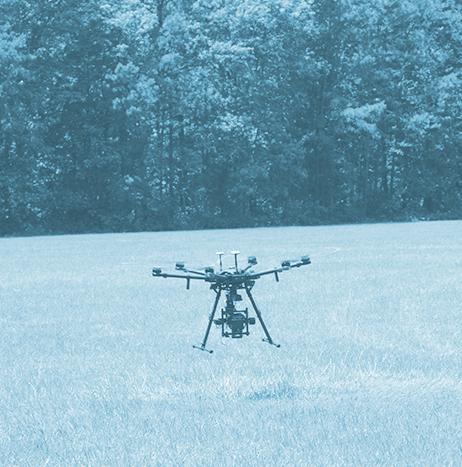When it comes to self-driving vehicles, cars seem to get most of the publicity but many new and established players are seeking to transform commercial trucking by developing automation technology that helps or removes the driver.
Companies have equipped trucks with various sensors, software, tracking devices and wireless communications gear and are testing their souped-up vehicles on real roads, sometimes with customer freight onboard.
According to proponents of such efforts, autonomous trucking offers many benefits, including increased safety. In the United States, about 4,000 people a year die in truck accidents, most of which are caused by human error.
Driverless trucks could also save money and boost productivity.
IHP
IHP
Boxbot unveils new last-mile delivery system featuring self-driving vehicles
A last-mile logistics and automation startup called Boxbot is reimagining the way e-commerce packages and other shipments are delivered to consumers with its new last-mile delivery system featuring

Embry-Riddle, UCF partner to examine how UAS can be used to map oyster reefs
With a focus on 21 oyster reefs near Edgewater, Florida, Embry-Riddle Aeronautical University and the University of Central Florida (UCF) have partnered to develop methodologies for remotely mapping regions that are difficult, and expensive, to monitor on site.
The goal of the research is to utilize UAS to collect different types of information while surveying the reefs, without ever visiting the locations in person.
If the project is successful, it would represent progress, signaling a clear change in the way environmental data has traditionally been collected, according to Dr. Dan Macchiarella, professor of Aeronautical Science.

Fairfax County Board of Supervisors approves Public Safety small UAS program
On Tuesday, May 21, the Fairfax County Board of Supervisors voted unanimously to approve a Public Safety small UAS program in Fairfax County, Virginia.

Alpha Unmanned Systems' Alpha 800 selected as UAS platform for H2020 ResponDrone Project
Alpha Unmanned Systems has announced that its Alpha 800 has been selected as the UAS platform for the European Union's three year €8.3 Million H2020 ResponDrone Project.
According to Alpha, the Alpha 800 will be used to demonstrate how multi-UAS operation can deliver high value data and services for first responders following a disaster.
The project, which kicked off on Monday, May 20 in Madrid, Spain, is made up of 20 companies—including Thales, IAI and DLR—from 12 countries. Alpha says that it will manage all flights and systems integration into both the Alpha 800s and the cloud-based data analysis platforms.
Soldiers train with first personal UAS in the U.S. Army
From April 29 to May 3, Program Executive Office Soldier (PEO Soldier) fielded the first personal UAS in the U.S. Army to soldiers of 3rd Brigade Combat Team, 82nd Airborne Division at Fort Bragg, North Carolina.
Along with inventory and taking possession of the technology, soldiers also spent the week-long fielding receiving classroom instruction on the system's capabilities, its controls, and how to operate it.

Drive.ai uses external communication panels to talk to public
With no driver at the helm, self-driving vehicles are posed with the challenge of effectively communicating with their surroundings.
Drive.ai has addressed that challenge head-on, equipping its self-driving vehicles with external communication panels that convey a variety of messages to properly communicate with drivers, pedestrians, cyclists, and everyone else on the road.
“Our external communication panels are intended to mimic what an interaction with a human driver would look like. Normally, you’d make eye contact, wave someone along, or otherwise signal your intentions,” Drive.ai CEO Bijit Halder tells AUVSI via email.

NextStep Robotics, developer of robotic therapy to help treat foot drop, receives $600,000 in funding
NextStep Robotics Inc., the developer of a personalized robotic therapy to help treat foot drop in recovering stroke patients, has announced that it received $600,000 during its second funding round.
With this round of funding, NextStep says that it will be able to move from prototyping and development to manufacturing and sales.
NextStep Robotics is based on intellectual property licensed from the University of Maryland, Baltimore (UMB). With more than a decade of research behind it, the robotic therapy is the “first effective treatment option for foot drop,” the company says, as it helps stroke survivors and others regain mobility using clinically proven rehabilitation training.

Invert Robotics looks to increase global footprint of its climbing robot
Robotics company Invert Robotics has closed an $8.8 million round of financing. The company will use the strategic investment to scale its team, open a U.S. office and expand its technology platform and industry-specific technologies.
Headquartered in New Zealand, Invert Robotics’ goal is to increase the global footprint of its climbing robot, which is the first robot specifically designed to inspect the integrity and safety of non-magnetic, hazardous environments, according to the company.
“Our climbing robots go where other robots cannot and people should not,” says Invert Robotics Managing Director Neil Fletcher.

Ford's 'Survival' robot delivers parts to keep production going around company's plant
Ford is actively working on autonomous vehicles, but the company has thrown its hat into the robotics arena with the introduction of its self‑driving robot, nicknamed ‘Survival.’
Developed entirely by Ford engineers, Survival earned its nickname because of its ability to adapt to its environment. It can dodge unforeseen objects, change its route if obstructed, and stop whenever necessary.
Survival is currently being tested in one of Ford’s manufacturing plants in Europe, delivering spare parts around the plant. The company notes that it is the first of its kind to be used in a Ford facility in Europe.


